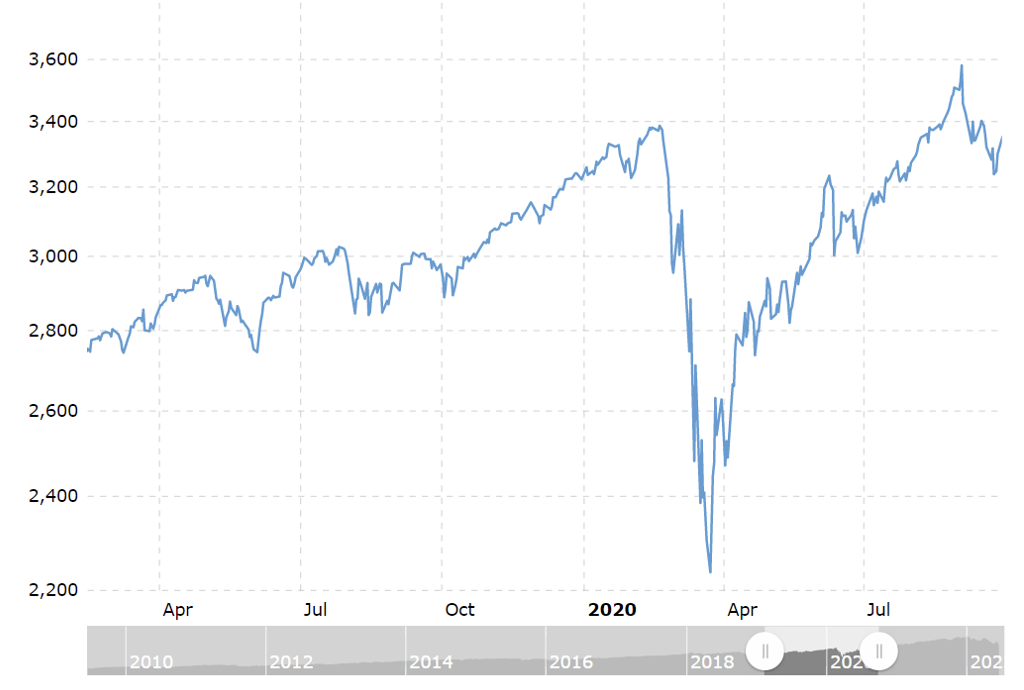No single topic has led to more ink being spilled in financial journals and textbooks than diversification.
This is because no matter what the size of your portfolio is, you will unavoidably have to think long and hard about how you want to approach this problem. Whether you are managing a portfolio valued in millions, thousands, or in any other range for that matter, you will have to confront the problem of how you will spread your resources between different asset classes.
In the following series of articles, we will discuss this general theme whilst trying to shed light on how investors today can approach this problem when they are thinking about their own risk tolerance and what they want to get out of their investments.
What exactly does it mean to diversify your portfolio?
To start at the beginning, it’s important to clarify exactly what is meant by this fundamental term.
In its simplest version, diversification simply means that you should aim to hold a reasonable variety of investments within your portfolio, rather than concentrating too much of your scarce resources on just one investment. This is because whilst every investor carries out some degree of due diligence and research before they go ahead and put their money into any specific investment, there is, unfortunately, no amount of research that can guarantee you against any risk of the value of your investment falling.
This is especially true over short- to medium-term timeframes, where market volatility can easily lead to perfectly sound investments rising and falling very dramatically due to forces outside an investor's control. Whilst over a longer-term horizon, there should be less volatility to factor in, the fact that periodic market crashes such as those of 2008 could still leave an unlucky long-time saver happening through no fault of their own to be withdrawing their money at a time of vastly deflated asset values.
As can be seen in the chart below sourced from Macro Trends, the S&P 500 index of leading US company's most recent nose-dive was in the first quarter of 2020, when the emergence and alarmingly rapid global spread of Covid sparked a mass sell-off of equities. This led the index to plummet from around 3,400 to just over 2,200, leaving anyone unfortunate enough to be nearing retirement at that time with approximately 35% less capital than they would have had if they had exited the market mere weeks earlier. Whilst the index did subsequently rebound on the back of spectacular levels of fiscal stimulus injected into the flagging economy by the US government, there is a precisely zero possibility that similar collapses in value won’t happen again.

Therefore, given the ever-present possibility that even sound and sensible investments will fall in value from time to time, it has become a core foundational principle of good money management that you don’t ‘place all your eggs in one basket’, so to speak.

Therefore, given the ever-present possibility that even sound and sensible investments will fall in value from time to time, it has become a core foundational principle of good money management that you don’t ‘place all your eggs in one basket’, so to speak.
Whilst this can’t protect you against the possibility some of your investments will decline in value some of the time, it can provide you with some cover given that it is much more unlikely that everything will decline at the same time. In this way, diversification can be thought of as a mechanism to de-risk your investments whilst still enabling you to capture a good amount of upside potential.
How can I diversify my portfolio?
Apologies if the claims above seem self-evident, but it’s always good to make the case for any investment philosophy as explicit as possible, and one of our core values here at Shojin is that we pride ourselves on clear and straightforward communication.
If there is no debate about whether or not diversification itself is a good idea, there is a great deal of debate about how this is best accomplished.
There are several variables by which you can think about how you want to diversify your portfolio; classic frameworks to do so would include long-term vs short-term investments, stocks versus bonds, large-cap versus small-cap, developed markets versus emerging, etc.
These are all relevant variables and should undoubtedly be ‘in the mix’ when any individual investor is considering how to diversify their personal portfolio. However, we believe by far the most important axis around which diversification should turn is the question of asset allocation – specifically, how much should be put into so-called ‘traditional’ assets, and how much into ‘alternative’ assets.
Traditional assets versus alternatives
Traditional assets are those financial securities that are and have always been open to retail investors, primarily stocks, bonds, and mutual funds or ETFs made up of a selection of stocks or bonds.
Alternative assets are all other investments, many of which have been out of reach for ordinary investors until relatively recently.
Here at Shojin we believe this theme – comparing and contrasting the performance of traditional assets to alternatives – is of increasing and in some ways supreme importance today.
Given the unprecedented rise in global inflation which has sent equities tumbling, and that bond markets are racked with uncertainty given the changing direction of interest rates, the need for alternative assets as diversifying tools has never been greater.
It should be borne in mind that the classical diversifying device was always to split a portfolio between equities on the one hand, and bonds on the other, on the premise that the two types of security performed inversely and could be expected not to fall simultaneously. This view that stocks and bonds can ‘balance against each other’, whilst not entirely incorrect, is no longer enough to provide all-around diversification for a portfolio given the current simultaneous declines seen by both equity and bond markets.
This will be explored further in the coming series of articles where we will outline trends in how mass affluent and high-net-worth investors are currently allocating their investments between cash, equities, bonds, funds, and alternatives. Within the alternatives sector, real estate makes up by far the largest slice of assets under management, and we will discuss exactly why this is the case and how investors can start to gain access to the diversifying potential of real estate.
Today, the trend is very much towards more real estate investment/diversification, and our view is that real estate ultimately remains one of the best ways to reap the rewards of successfully diversifying a portfolio.




















